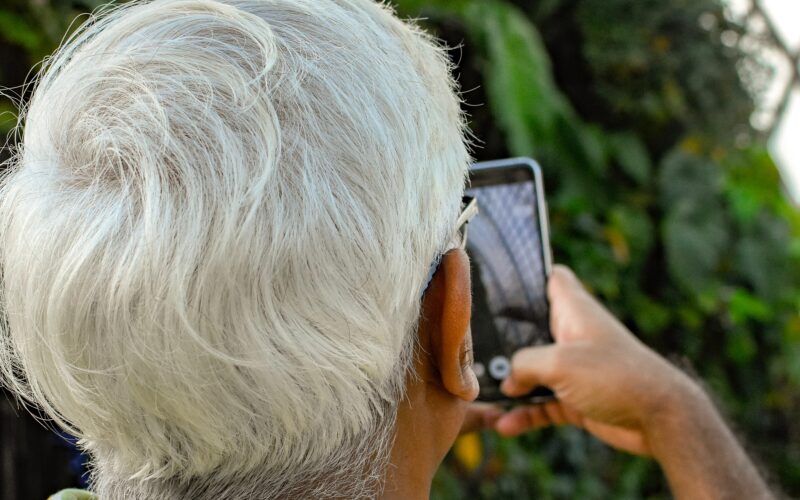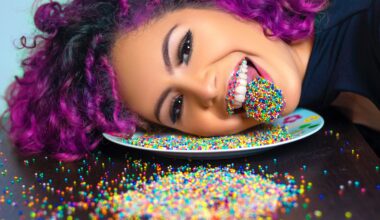Understanding White Hair
White hair has a captivating allure, and to truly appreciate it, we must first uncover the science behind its transformation. In this section, we’ll delve into the intricate biological factors and explore the historical and cultural significance of white hair.
The Science Behind White Hair
- Melanin Production
At the heart of understanding white hair lies melanin, the pigment responsible for the color of our hair, skin, and eyes. As we age, the melanocytes in our hair follicles gradually produce less melanin. This reduction leads to a loss of color, resulting in white or gray hair.
- Genetic Factors
Genetics play a significant role in determining when and how your hair will turn white. If your parents experienced early graying, you might too. Genes dictate not only the color but also the timing of this transformation.
- Hormonal Changes
Hormonal fluctuations, particularly a decrease in melanin-stimulating hormones, can accelerate the graying process. Stress, menopause, and thyroid disorders are common triggers for hormonal imbalances that may lead to white hair.
- Nutritional Factors
A balanced diet rich in essential vitamins and minerals, such as copper and zinc, can help maintain healthy melanin production. Nutrient deficiencies can contribute to premature graying.
- Environmental Factors
Exposure to environmental elements like pollution, UV radiation, and toxins can damage hair follicles and hasten the graying process. Protecting your hair from these factors can help maintain its natural color.
The Historical and Cultural Significance of White Hair
- Wisdom and Respect
In many cultures, white hair has long been associated with wisdom, experience, and respect. Leaders, elders, and scholars often sported white hair as a symbol of their knowledge and authority.
- Fantasy and Mythology
White hair has also held a place in mythology and fantasy. Characters like wizards, fairies, and supernatural beings are frequently depicted with flowing white locks, reinforcing its mystical appeal.
Understanding the science behind white hair is the first step in appreciating its beauty and significance.
Transitioning to White Hair Gracefully (If Happening Naturally)
Embracing the transition to white hair can be a liberating and empowering experience. In this section, we’ll discuss the psychological aspects, the importance of social acceptance, and share practical tips for taking care of your natural white hair.
Embracing the Transition
- Psychological Preparation
- Embracing white hair begins with a positive mindset. Understand that it’s a natural part of aging and not a sign of decline.
- Focus on the unique beauty of white hair and the confidence it can bring.
- Social Acceptance
- Friends, family, and colleagues may have varying reactions to your transition. Share your reasons for embracing white hair, and let them understand your perspective.
- Seek support from communities and forums of individuals going through the same journey. Sharing experiences can be uplifting.
Hair Care Regimen
- Moisturizing
- White hair tends to be drier and more fragile. Invest in hydrating shampoos and conditioners to maintain its vitality.
- Regular deep conditioning treatments can help prevent frizz and breakage.
- Avoiding Certain Products
- Harsh chemicals and sulfates in hair products can strip white hair of its natural oils. Opt for sulfate-free and gentle hair care products.
- Limit heat styling to protect your hair from excessive damage.
Styling White Hair
- Finding the Right Cut
- Consult with a hairstylist experienced in white hair to find a flattering cut that enhances your features.
- Consider shorter styles that are easier to maintain and style.
- Accessorizing
- Accessorizing with headbands, scarves, or hairpins can add a touch of elegance to your white hair.
- Experiment with different styles to express your personality.
Transitioning to white hair naturally is a journey of self-acceptance and embracing the beauty of maturity.
Dyeing Your Hair White
While some embrace their natural white hair, others are captivated by the allure of intentionally white hair. In this section, we’ll explore the steps to prepare your hair for dyeing, choosing the right products, and maintaining your white-dyed hair.
Preparing Your Hair
- Pre-lightening
- Before dyeing your hair white, it’s essential to pre-lighten it to a pale blonde shade. This acts as a blank canvas for achieving a vibrant white color.
- Seek professional help or use a high-quality lightening kit for even results.
- Conditioning
- Lightening your hair can make it more porous and prone to damage. Deep-condition your hair regularly to restore moisture and strength.
- Consider using hair masks and leave-in conditioners to keep your hair healthy.
Choosing the Right Dye and Developer
- Selecting the Dye
- Opt for a white or silver hair dye from a reputable brand. Ensure it’s formulated for the shade you desire.
- Consider semi-permanent or temporary dyes if you’re unsure about committing to a permanent change.
- Choosing the Developer
- The developer you choose will affect the intensity of your white hair color. Lower-volume developers result in a subtler shade, while higher volumes create a more vivid white.
- Start with a lower-volume developer if you’re new to hair dyeing, and adjust as needed.
Maintaining White Dyed Hair
- Touch-ups
- White hair dye may fade over time, especially with regular washing and exposure to the elements. Schedule regular touch-up sessions to maintain vibrancy.
- Pay attention to your roots, as regrowth can be more noticeable with white hair.
- Using Purple Shampoo
- Purple shampoos help neutralize yellow or brassy tones that can develop in white hair. Use them once a week or as needed to keep your hair looking pristine.
- Regular Conditioning
- Continue deep conditioning your hair even after dyeing it white. Healthy, well-moisturized hair showcases the color beautifully.
Dyeing your hair white is a bold statement that requires proper preparation and maintenance. By following these steps, you can achieve and enjoy the striking hair you desire.
Conclusion
In this journey through the allure of white hair, we’ve unveiled the science behind its transformation, explored the beauty of embracing it naturally, and learned the art of dyeing your hair white intentionally. Here are the key takeaways:
- Understanding the Science: White hair is the result of reduced melanin production, influenced by genetics, hormones, nutrition, and environmental factors. It carries a rich history of wisdom and respect.
- Transitioning Naturally: Embracing your natural white hair starts with a positive mindset and social acceptance. A proper hair care regimen and styling can enhance its beauty.
- Dyeing Intentionally: Dyeing your hair white requires pre-lightening, choosing the right products, and regular maintenance. It’s a bold choice for those who want to rock this stunning look.
Remember, whether your hair turns white naturally or you decide to dye it white, the most important thing is embracing the change with confidence and pride. White hair carries a unique elegance that reflects not just your age but also your life experiences and wisdom.
So, whether you’re flaunting natural white hair or rocking the trendy white dye, do it with confidence, and let your inner beauty shine through. White hair is not just a color; it’s a statement of grace and individuality.
Embrace the allure of white hair and let your true beauty radiate for the world to see!






